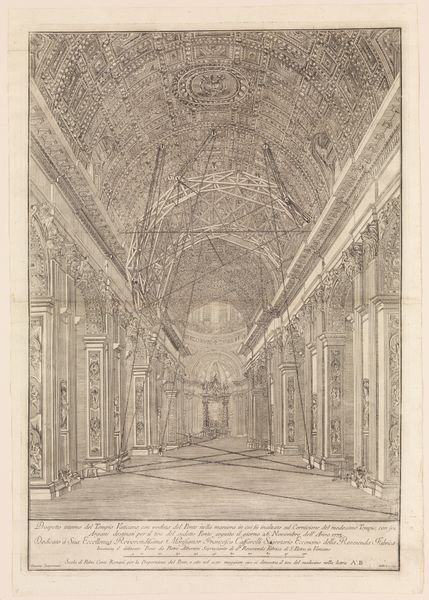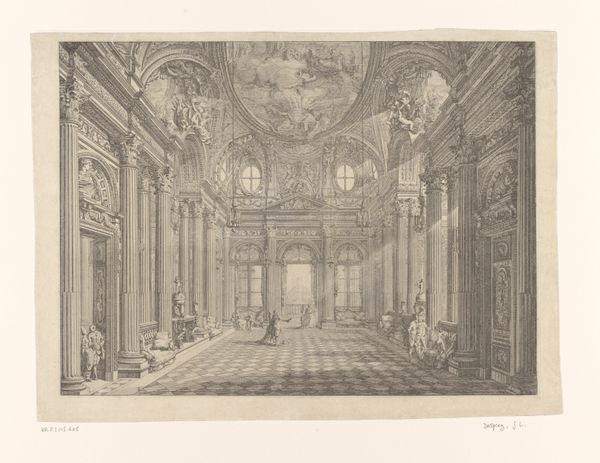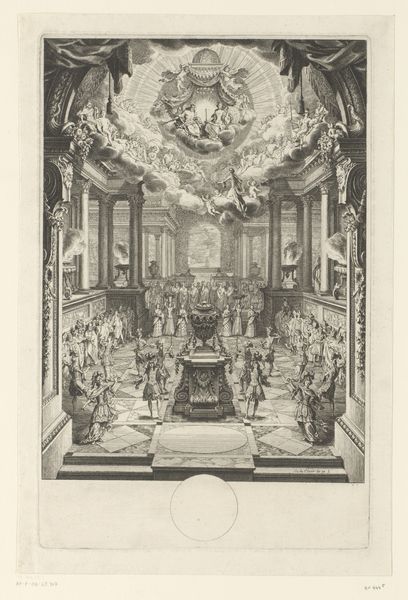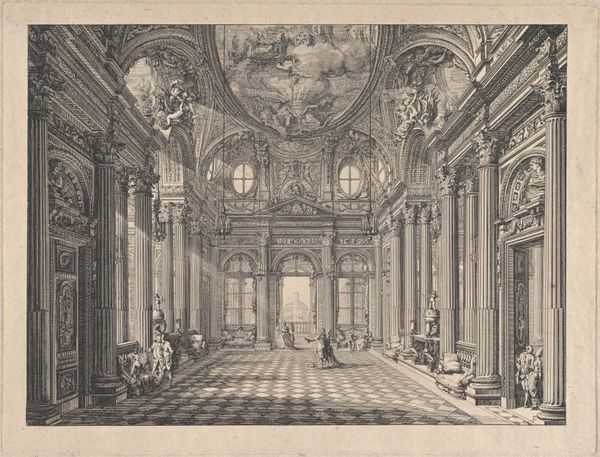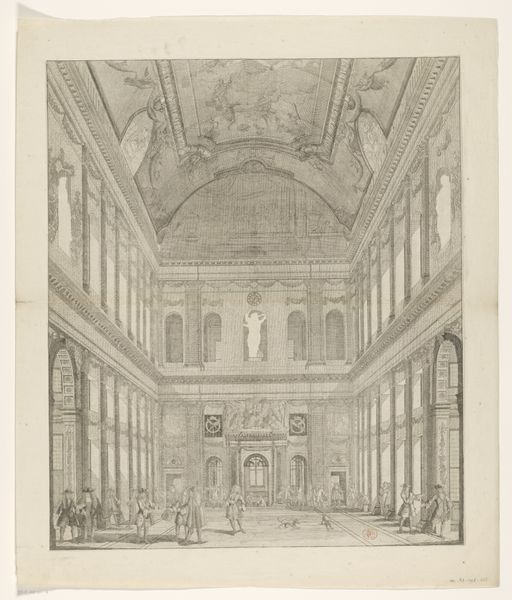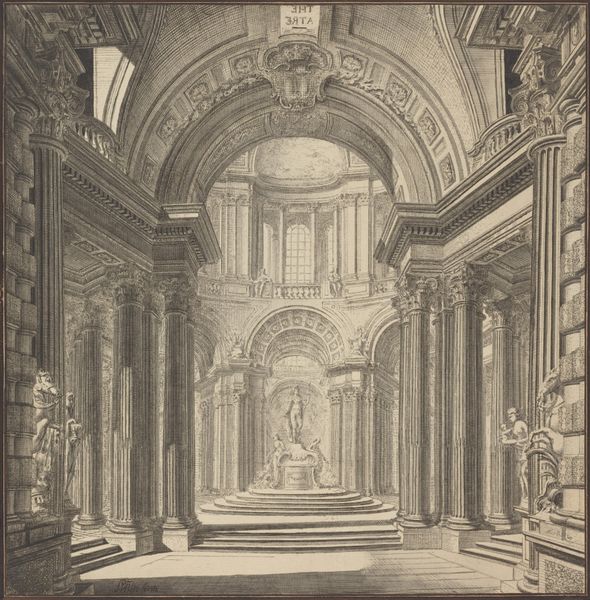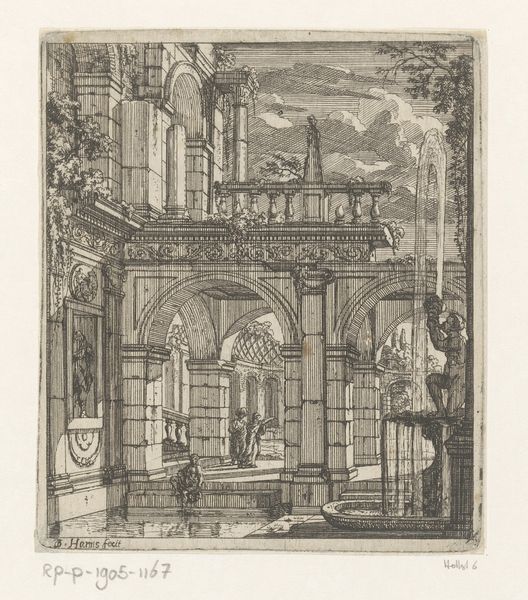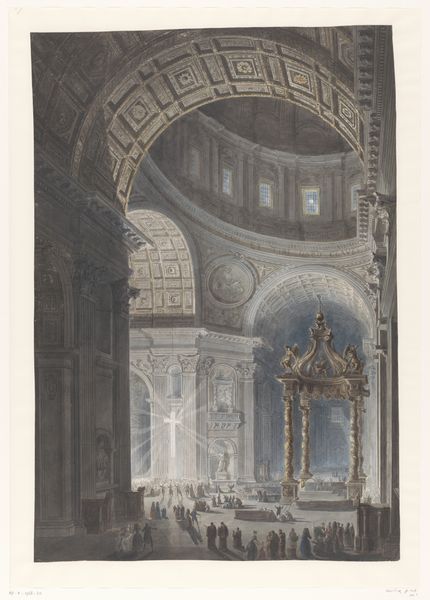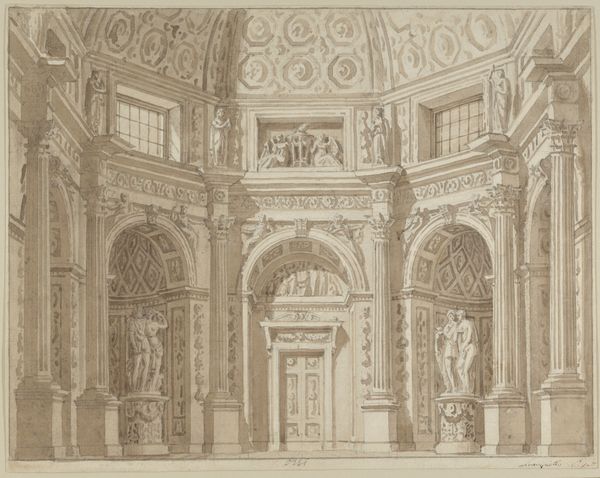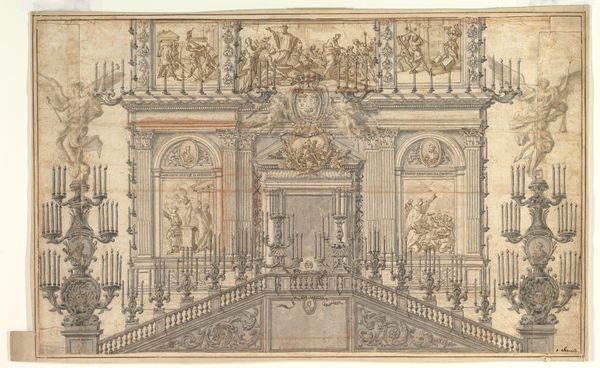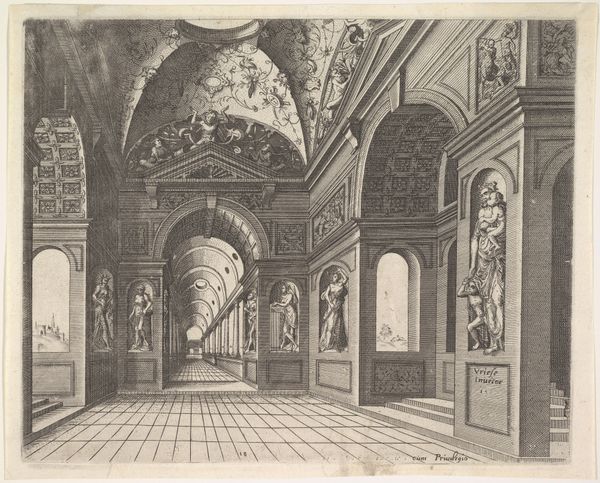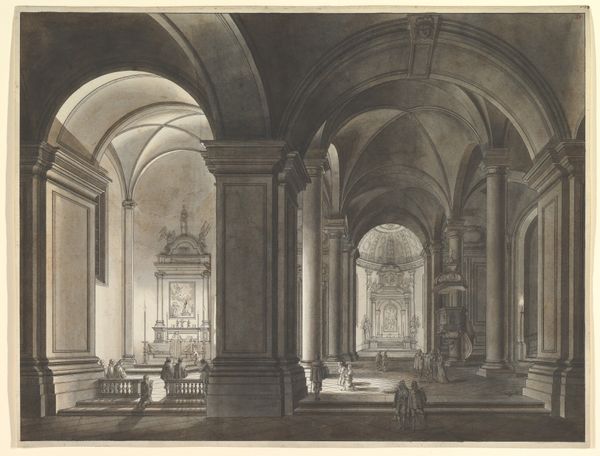
drawing, print, etching
#
drawing
#
baroque
# print
#
etching
#
etching
#
perspective
#
history-painting
Dimensions: Sheet (Trimmed): 31 9/16 × 23 5/16 in. (80.2 × 59.2 cm)
Copyright: Public Domain
Editor: This etching, "Interior view of the Enfants Trouvés" by Étienne Fessard, was made in 1759. The architecture depicted looks ornate and maybe a little overwhelming with the amount of detail packed in. What strikes you when you look at this? Curator: It's interesting how the etching as a *process* itself, becomes a way to circulate and democratize access to the visual experience of such an ornate, likely exclusive, space. Consider the labor involved: the engraver meticulously translates architectural grandeur into reproducible lines, mediating the consumption of aristocratic aesthetics. The image, made through etched copper plates and printing presses, allows for wider accessibility, influencing tastes and potentially sparking critical awareness about social stratifications. How does the materiality of the print itself affect your viewing of the space represented? Editor: That's a perspective I hadn’t considered! I was focused on the implied wealth of the depicted interior but looking at it as a *print* that was produced and distributed really changes things. How would this "accessibility" shape the consumption and understanding of architecture? Curator: Precisely! By dissecting and rendering buildings or their decoration into easily consumable images, printmaking becomes integral to design dissemination. It transforms complex constructions into manageable units, influencing taste. Consider then: the print's scale versus the reality of the Enfants Trouvés itself; one enhances its visual appeal through wide circulation; but then where are the foundlings in this picture of architecture? Is the *Enfant Trouvé* made absent? Editor: I'm starting to think about the absences of labor as much as the image and access it offered. Thank you! Curator: It reveals a kind of dialectic, doesn’t it? We think of buildings and structures being a part of society – something beyond just art, but inherently part of society.
Comments
No comments
Be the first to comment and join the conversation on the ultimate creative platform.
